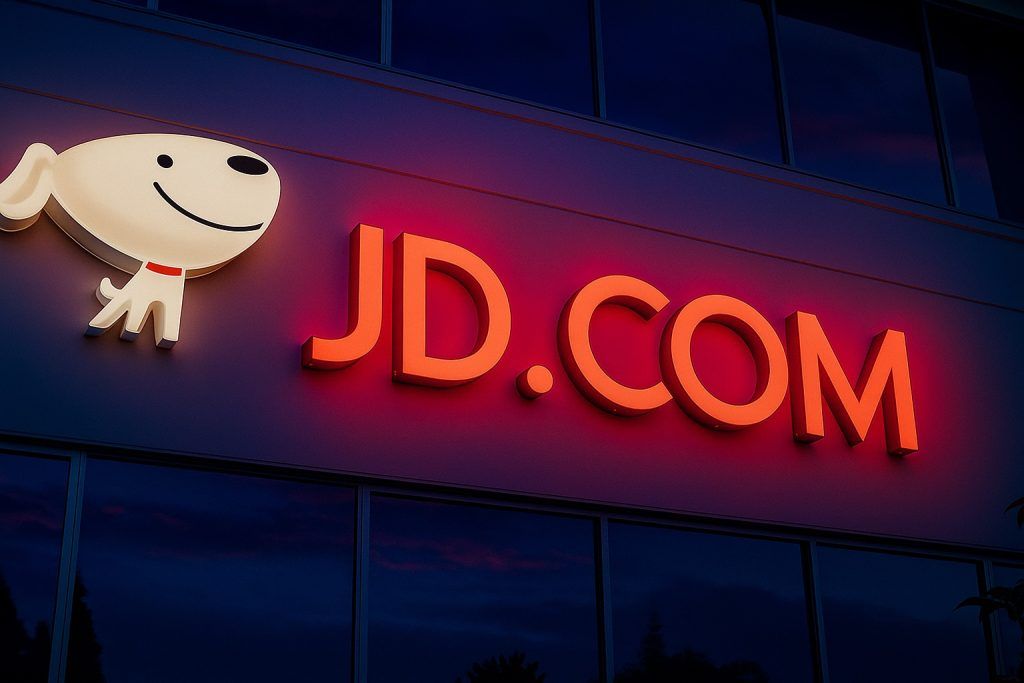- Stock Price (Nov 1): Occidental (OXY) closed Friday, Oct 31 at $41.20 (up ~1.2% on the day) [1]. After-hours trading saw it around $41.10, and Monday pre-market quotes were roughly flat, in line with modest moves in crude oil futures.
- Earnings & Dividends: OXY will report Q3 results Nov 10. Wall Street sees EPS of about $0.51 vs $1.00 a year ago (nearly –49% YoY) [2]. Occidental’s most recent quarterly dividend was $0.24/share (paid Oct 15, 2025), which annualizes to ~$0.96 and a ~2.3% yield [3] [4]. Management has signaled no plans to cut the payout, given improving cash flow.
- Recent Catalysts: In early October OXY agreed to sell its OxyChem chemicals business to Berkshire Hathaway for about $9.7 billion [5]. It plans to use roughly $6.5 billion of the proceeds to pay down debt, aiming to drive its total debt below $15 billion [6]. The deal closed with modest market impact – OXY shares briefly dipped ~7% on the announcement [7] but have since recovered. This debt reduction follows ~$7.5 billion in repayments over the past year [8], significantly improving Occidental’s balance sheet.
- Analyst Sentiment: Broker targets for OXY range widely (roughly $38–$65) [9]. UBS just maintained a Neutral rating with a $45 PT [10]. In mid-Oct BofA raised its PT to $47 (Neutral) [11] and Jefferies held at $44 [12], while HSBC upgraded to Buy ($55) viewing the dip as a buying opportunity [13]. Evercore cut its target to $38 on concerns the chemicals sale is dilutive [14]. On average analysts see about $50 as fair value [15] [16] (roughly +18–26% upside from current levels).
- Oil Market Context: Global oil supply appears ample. A late-Oct Reuters poll shows 2025 Brent crude averaging ~$68/barrel and WTI ~$64.8 [17]. Analysts note “supply growth, modest demand, and geopolitical uncertainty” are key factors restraining prices [18]. OPEC+ has been pumping more (adding >2.7m bbls/day since spring) despite slowing demand growth [19] [20]. Inventories are high and a surplus looms in 2026. Geopolitical risks (Gaza, Iran, new U.S. sanctions on Russian oil) add volatility, but so far haven’t spiked prices significantly [21] [22].
- Macro Factors: In late October the Fed cut rates by 25bps, but Powell warned further easing may be delayed until clear data return [23] [24]. Lower rates could mildly support economic growth and energy demand, but growth signals are mixed. The Fed’s cautious stance (amid a U.S. government shutdown hindering data) keeps markets jittery [25]. Broad U.S. equity indices were near all-time highs, but energy stocks lagged as oil prices dipped from mid-Oct peaks.
Latest Stock Price & Premarket Movement
Friday’s close at $41.20 [26] left Occidental near the lower end of its recent trading range (roughly $40–46 in the past month [27]). In technical terms, the stock is hovering just above a chart support zone around $40.8–41.1 [28]. On that basis, Monday’s premarket session showed OXY little changed, following a flat oil-futures overnight. By contrast, broad markets (Dow, S&P) were expected to open modestly higher on the heels of the Fed decision and mixed economic cues. Given OXY’s recent vol and current price, any meaningful gap either way could be triggered by oil price moves or news flow (e.g. fresh commentary on Q3 or debt reduction).
Recent News and Events Impacting OXY
The biggest recent story was the sale of OxyChem. On Oct. 2 Occidental confirmed it will sell its chemicals unit to Berkshire Hathaway for ~$9.7 billion [29] [30]. About $6.5 billion of the proceeds are earmarked to pay down debt [31], a move designed to strengthen the balance sheet (debt-to-capital is roughly 39.7% now [32]). Market reaction was mixed – shares dipped on the news (apparently due to worries about lost cash flow from the chemicals business) [33] but have stabilized. Analysts note the divestiture is financially positive (debt and interest reduction) but potentially dilutive to future cash flow [34] [35].
Elsewhere, Occidental reiterated its Q3 earnings release (Nov 10 after market close) and conference call (Nov 11) [36]. Investors are watching production trends: Permian output has stayed strong, while Gulf of America volumes surprisingly held up thanks to light hurricane activity [37]. On the regulatory front, there were no new major rulings specific to OXY, though the company’s carbon-capture initiatives (e.g. the STRATOS direct-air-capture project) face uncertainty as Washington debates funding cuts [38]. Finally, as a reminder of OXY’s roots, Warren Buffett’s Berkshire owns about 28% of the company (256M shares) [39]. Buffett himself joked in mid-2025 that OXY was one of his “rare misfires,” but he’s been benefiting from recent oil price jumps amid Middle East tensions [40].
Analyst Commentary and Expert Views
Analysts remain mixed on OXY’s near-term outlook. UBS, which rates OXY Neutral, recently reiterated a $45 price target [41] and notes that until Occidental hits its debt reduction goals, sentiment won’t improve [42]. Indeed, UBS’s fair-value work argues that at ~16.8× forward earnings, the stock is not overvalued [43]. J.P. Morgan, by contrast, maintained a neutral stance at a $48 target but warned of an “underwhelming” Q3 (projecting EPS ~$0.24 vs $0.34 consensus) [44]. After OxyChem’s sale, BofA Securities raised its target to $47 (Neutral), while Jefferies held at $44 (Hold) [45]. On the bullish side, HSBC went to Buy with a $55 target, calling any post-sale dip a buying opportunity [46]. Overall, out of ~25 analysts: ~4 rate it “Buy,” ~17 “Hold,” and ~3 “Sell,” with an average target in the low $50s [47] [48].
Some oil-market strategists emphasize macro factors. UniCredit’s Tobias Keller noted “supply growth, modest demand, and geopolitical uncertainty” as key drivers for prices [49] – context that directly affects OXY’s revenues. DBS analyst Suvro Sarkar observed that OPEC+ is essentially prioritizing market share over bolstering prices [50]. These expert views underscore that Occidental’s stock is very oil-price sensitive: stronger oil could send OXY higher, whereas excess supply or waning demand likely caps gains.
Occidental’s Financial Position and Outlook
Occidental’s financials have been improving thanks to asset sales and debt cuts, but legacy debt from past deals still looms. The company paid off about $7.5 billion of debt in the last 13 months [51], and the OxyChem deal is meant to trim principal toward a sub-$15B target [52]. Interest expense has come down accordingly (OXY says annual interest will drop by roughly $350M from the sale [53]). Free cash flow has picked up, driven by high Permian production and higher realized oil prices earlier in 2025. However, analysts caution that profits will be volatile: Zacks expects full-year 2025 EPS ~$2.22 (–36% vs 2024) [54], and revenues roughly flat year-on-year. The June 2025 quarter saw adjusted EPS of $0.39 (vs $0.28 expected) and revenues $6.46B (just shy of the $6.48B consensus).
In industry terms, Occidental is one of the largest U.S. oil & gas producers, with major assets in the Permian Basin, Gulf of Mexico, and Mid-Continent (and historically a sizeable chemicals arm). Its debt-to-capital of ~39.7% [55] is higher than peers (Zacks notes ~31.6% industry average), reflecting acquisitions (like Anadarko) and past dividends. But Occidental’s management has emphasized prioritizing debt reduction over new buybacks or spending. The company’s near-term strategy hinges on leveraging its upstream strength while reducing costs; it has even highlighted low hurricane disruption in recent quarters as a bonus. Cash flow from ongoing operations is expected to cover capex and dividends; analysts note that Occidental’s dividend payout (~$0.96/year) costs about $2.2B annually (per older data) but is deemed sustainable if oil stays mid-range. CEO Vicki Hollub has repeatedly said she sees no threat to the dividend in the current cycle.
Overall, Occidental trades at a premium on forward multiples vs peers (forward P/E ~18.9 vs industry ~16.2 [56]), reflecting both its structural debt and the oil exposure it offers. With the OxyChem sale boosting the balance sheet, many analysts view Occidental’s fair value around the mid-$40s to low-$50s. Simply Wall Street, for example, computes an intrinsic fair price near $50.48 (about 23% above recent levels) [57], assuming steady oil demand and continued debt paydown.
Technical Analysis – Chart Patterns and Indicators
From a technical viewpoint, OXY’s chart has been relatively weak. Price has traded roughly in a $40–46 range over the last month, and it currently sits near the bottom of that range [58]. ChartMill’s analysis assigns OXY a very low technical score, noting that both its short- and long-term trend indicators are negative [59] [60]. In particular, ChartMill identifies a key support zone around $40.78–41.14 (where multiple trendlines converge) [61]. Immediate resistance lies at about $42.3–42.9 (formed by several moving averages and trendlines) [62], with higher resistance up near the mid-$44s and upper-$45s [63]. In other words, OXY would need to clear the $44–45 area to signal a bullish breakout; until then, sellers could re-emerge each time the stock approaches those levels.
Momentum indicators are mixed-to-bearish. ChartMill reports OXY’s relative strength metric is very low (outperformed by ~82% of stocks) [64], and its RSI-type signals are subdued. (By contrast, comparable oil stocks have maintained stronger price momentum this year.) In summary, technical readings suggest caution: traders see no clear uptrend, and OXY is effectively range-bound. A move below ~$40.8 would be negative, whereas reclaiming above ~$45 could spur a short squeeze. Moving averages also weigh on the stock – most benchmarks have 50-day and 200-day levels above current price, a pattern generally seen as bearish in the near term.
Oil Market and Macro Context
Occidental’s fortunes rise and fall with crude. Oil prices have been under pressure recently: WTI sits around the low $60s and Brent mid-$60s (as of late Oct), down from the $80s seen a year ago. This decline reflects a mix of factors: OPEC+ has been adding supply (encouraging output increases of ~137k bpd for Nov and expected further upticks in Dec) [65], while end-user demand growth (especially in the OECD) is moderating [66]. U.S. inventory data and Chinese growth worries have also weighed on prices. However, geopolitical risk premiums remain, even if somewhat reduced by recent ceasefire signals in Gaza [67]. For Monday’s open, any sudden move in oil (for example, renewed conflict in the Middle East or new sanctions on Iranian/Russian oil) could swing OXY sharply either way.
Other macro factors: U.S. gasoline demand is still near record highs, and global natural gas and coal markets (which affect power generation mixes) are shifting slowly towards oil. Inflation in major economies is cooling, which might temper consumer mobility but could also eventually lead to easier policy (benefiting energy stocks broadly). The recent Fed rate cut should support equities and energy demand modestly, but the Fed’s cautious tone injects uncertainty. Finally, broader markets (S&P 500, Nasdaq) are in fairly strong uptrends; energy has lagged, so a rebound in oil could help OXY catch up.
Outlook and Forecast
Looking ahead, analysts generally expect a choppy few weeks for OXY until Q3 results. Most forecasts call for continued earnings weakness in 2025: Barchart’s consensus sees full-year EPS ~$2.27 (–34%) [68] and $1.69 in 2026 (–26%) [69]. In this light, forecasts beyond a year or two are highly dependent on oil’s trajectory. On price targets, as noted, Wall Street average is roughly $50–$52 (with a wide spread from ~$38 to $65) [70] [71]. This implies 10–30% potential upside from current levels, but only if the oil outlook cooperates.
For Monday’s open specifically, key drivers will be: (a) the direction of crude futures and any overnight energy news; (b) broader market sentiment (e.g. reaction to Fed or economic data); and (c) any new OXY-specific news (unlikely, but analysts may issue updates or talk up the Berkshire deal’s impact). Investors should watch support near $41 (just below current price) – a breach could trigger stops – and resistance at $44–45. Some Wall Street voices suggest a neutral-to-cautious strategy. For example, Zacks currently gives OXY a “Hold” rank and notes its estimate revisions have been slightly negative [72] [73].
In summary, Occidental’s near-term outlook is balanced: the recent debt-paydown and asset sale improve financial footing, but the stock remains highly tethered to volatile oil prices. If oil rallies (say above $70) or earnings beat estimates, OXY could gap higher. Conversely, if oil drifts lower (as many models predict) or production disappoints, OXY may slip toward multi-month lows. Long-term bulls point to the stock’s relative undervaluation and robust Permian cash flows; bears highlight debt, dividend obligations, and a risky upstream business. Monday’s premarket report suggests a wait-and-see stance: the key is oil and operational execution, with analysts largely looking for evidence of improved results on Nov 10.
Sources: Latest market data and company filings; Investing.com and Zacks analyst reports [74] [75] [76] [77] [78] [79] [80] [81] [82], among others. Each citation refers to independent financial news or data providers.
References
1. stockanalysis.com, 2. www.barchart.com, 3. stockanalysis.com, 4. stockanalysis.com, 5. www.investing.com, 6. www.nasdaq.com, 7. www.investing.com, 8. www.nasdaq.com, 9. www.investing.com, 10. www.investing.com, 11. www.investing.com, 12. www.investing.com, 13. www.investing.com, 14. www.investing.com, 15. www.barchart.com, 16. www.investing.com, 17. www.reuters.com, 18. www.reuters.com, 19. www.reuters.com, 20. www.reuters.com, 21. www.reuters.com, 22. investorsobserver.com, 23. www.reuters.com, 24. www.reuters.com, 25. www.reuters.com, 26. stockanalysis.com, 27. www.chartmill.com, 28. www.chartmill.com, 29. www.investing.com, 30. www.nasdaq.com, 31. www.nasdaq.com, 32. www.nasdaq.com, 33. www.investing.com, 34. www.investing.com, 35. www.investing.com, 36. simplywall.st, 37. www.investing.com, 38. www.investing.com, 39. investorsobserver.com, 40. investorsobserver.com, 41. www.investing.com, 42. www.investing.com, 43. www.investing.com, 44. www.investing.com, 45. www.investing.com, 46. www.investing.com, 47. www.barchart.com, 48. www.investing.com, 49. www.reuters.com, 50. www.reuters.com, 51. www.nasdaq.com, 52. www.nasdaq.com, 53. simplywall.st, 54. www.nasdaq.com, 55. www.nasdaq.com, 56. www.nasdaq.com, 57. simplywall.st, 58. www.chartmill.com, 59. www.chartmill.com, 60. www.chartmill.com, 61. www.chartmill.com, 62. www.chartmill.com, 63. www.chartmill.com, 64. www.chartmill.com, 65. www.reuters.com, 66. www.reuters.com, 67. www.reuters.com, 68. www.barchart.com, 69. www.barchart.com, 70. www.investing.com, 71. www.barchart.com, 72. www.nasdaq.com, 73. www.barchart.com, 74. stockanalysis.com, 75. www.investing.com, 76. simplywall.st, 77. www.investing.com, 78. www.investing.com, 79. www.reuters.com, 80. www.reuters.com, 81. www.chartmill.com, 82. www.barchart.com










